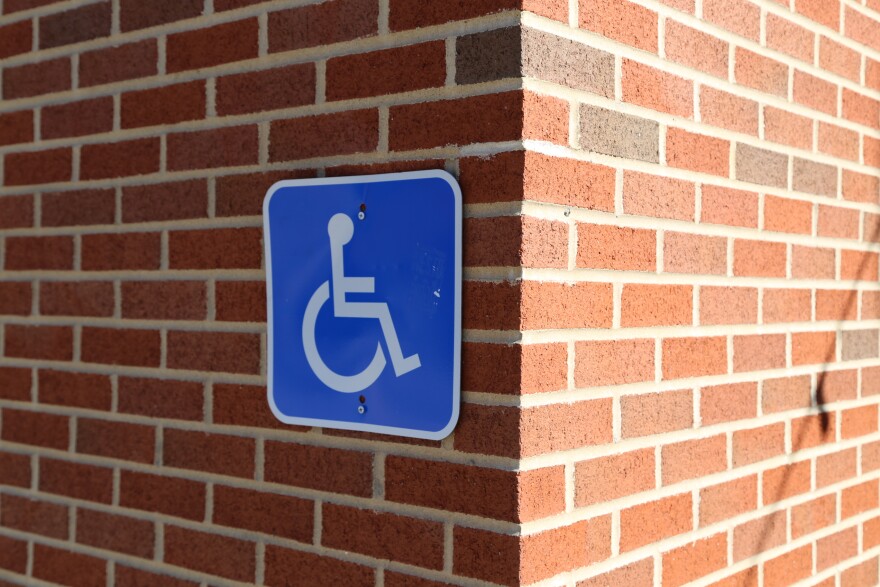Health
Pennsylvania Report Reveals Health Care Barriers for Disabled

A recent report highlights the ongoing challenges faced by individuals with intellectual and developmental disabilities (IDD) in accessing basic health care across Pennsylvania. The “Barriers to Care” report, produced by the Rosemary Collaboratory—a partnership involving Special Olympics Pennsylvania, The Arc of Pennsylvania, and global disability researchers—reveals significant obstacles, such as inaccessible facilities, inadequately trained healthcare providers, and low Medicaid reimbursement rates. These factors create a system that many find unwelcoming, confusing, and at times, unsafe.
According to Matt Aaron, president and CEO of Special Olympics Pennsylvania, the statistics are alarming. “People with intellectual and developmental disabilities die, on average, 20 years younger than the rest of the population,” he stated. “That’s stunning — and it’s something we can actually do something about.”
Training Gaps in Healthcare Provision
The report underscores a critical issue: the majority of healthcare providers receive insufficient training on how to treat patients with disabilities. This educational gap results in ineffective communication between clinicians and patients, which can diminish the quality of care. Dr. Amy Houtrow, chief of pediatric rehabilitation medicine at UPMC Children’s Hospital, commented on the prevailing mindset in medical education, stating, “In medical school, we’re taught about disability as the negative consequence of disease.” This perspective can foster harmful stereotypes, as she noted.
Houtrow advocates for a shift in medical education that recognizes disability as part of identity rather than solely as a medical issue. Through her leadership of the Leadership Education in Neurodevelopmental Disabilities (LEND) program at the University of Pittsburgh, she trains future healthcare professionals to treat patients with dignity and respect. Nevertheless, Houtrow emphasizes that financial reform is equally essential. “Much of the way healthcare is delivered is based on how and what is paid for,” she explained, arguing that until healthcare is viewed as a right, disparities will persist.
Personal Stories Highlight Systemic Issues
The implications of these systemic barriers are deeply personal for families. Lynn, a mother from western Pennsylvania, has spent nearly three decades navigating care for her 28-year-old son, Alex, who has nonverbal autism and an intellectual disability. She appreciates when healthcare providers engage directly with Alex, but often feels dismissed in the process. “We are the ones entrusted with conveying what they themselves cannot convey,” she remarked.
Lynn highlighted the need for practical adjustments, such as longer appointments and clearer communication, asserting that small changes could significantly enhance care. “Fifteen minutes might be perfect for me,” she said. “But fifteen minutes may not be perfect for him.”
Financial considerations further complicate access to care. Many providers avoid accepting Medicaid patients due to low reimbursement rates, which do not adequately compensate for the time and resources needed for complex cases. Lynn remarked, “What they’re being reimbursed doesn’t even remotely match the cost.” This creates a discouraging environment where healthcare providers may choose not to accept Medicaid patients, a policy that she believes sends a message about the value placed on the health and wellbeing of individuals with disabilities.
The “Barriers to Care” survey corroborates these experiences, revealing that limited training and inadequate financial incentives are significant obstacles for healthcare providers treating patients with IDD. Aaron emphasized that the report aims not only to identify problems but also to propose solutions. “We really tried to highlight both the challenges and the potential ways forward,” he said.
Improving communication is one of the simplest yet most effective changes suggested. Often, medical professionals focus their attention on caregivers rather than the patients themselves. “We’ve heard from people with disabilities that many times, the medical professional talks to the other person — almost as if the patient wasn’t in the room,” Aaron noted.
The report recommends creating welcoming environments, utilizing alternative communication tools, and empowering individuals with IDD to participate in their healthcare decisions. These recommendations build on lessons learned during the COVID-19 pandemic, which exposed existing disparities and prompted innovative approaches to care.
Addressing Data Gaps and Future Directions
Both Aaron and Sherri Landis, CEO of The Arc of Pennsylvania, pointed out that the lack of data significantly hinders progress in addressing health disparities. Pennsylvania does not consistently track health outcomes by disability type, complicating efforts to identify and tackle these disparities. “If data isn’t collected specific to disability, how do we know the rate of heart disease or diabetes?” Landis questioned.
Addressing these inequities is not only a moral imperative but also a financial consideration. Individuals with intellectual disabilities represent approximately 5% of Medicaid users but account for 15% of expenditures. “If we can do things to improve their health, we can not only address disparities in life expectancy — we can save a whole lot of money,” Aaron explained.
Despite the challenges, advocates are optimistic about the future. Examples of inclusive care, such as the Jefferson FAB (“For Adolescents and Beyond”) Center in Philadelphia, provide coordinated appointments in a sensory-friendly environment tailored for patients with developmental disabilities.
In March 2024, The Arc will host a Disability Health Summit to share recommendations from the report and showcase successful models like Jefferson. Moving forward, Houtrow advocates for a healthcare model that prioritizes relationships and inclusion. “It starts with listening — really listening — to people with disabilities and letting them be the experts in their own lives,” she said.
The “Barriers to Care” report serves as a crucial reminder of the work that remains to be done in ensuring equitable health care access for individuals with disabilities in Pennsylvania and beyond.
-

 Technology4 months ago
Technology4 months agoDiscover the Top 10 Calorie Counting Apps of 2025
-

 Health2 months ago
Health2 months agoBella Hadid Shares Health Update After Treatment for Lyme Disease
-

 Health3 months ago
Health3 months agoErin Bates Shares Recovery Update Following Sepsis Complications
-

 Technology3 weeks ago
Technology3 weeks agoDiscover 2025’s Top GPUs for Exceptional 4K Gaming Performance
-

 Technology4 months ago
Technology4 months agoDiscover How to Reverse Image Search Using ChatGPT Effortlessly
-

 Technology2 months ago
Technology2 months agoElectric Moto Influencer Surronster Arrested in Tijuana
-

 Technology4 months ago
Technology4 months agoMeta Initiates $60B AI Data Center Expansion, Starting in Ohio
-

 Technology4 months ago
Technology4 months agoRecovering a Suspended TikTok Account: A Step-by-Step Guide
-

 Health4 months ago
Health4 months agoTested: Rab Firewall Mountain Jacket Survives Harsh Conditions
-

 Lifestyle4 months ago
Lifestyle4 months agoBelton Family Reunites After Daughter Survives Hill Country Floods
-

 Technology3 months ago
Technology3 months agoUncovering the Top Five Most Challenging Motorcycles to Ride
-

 Technology4 weeks ago
Technology4 weeks agoDiscover the Best Wireless Earbuds for Every Lifestyle



















